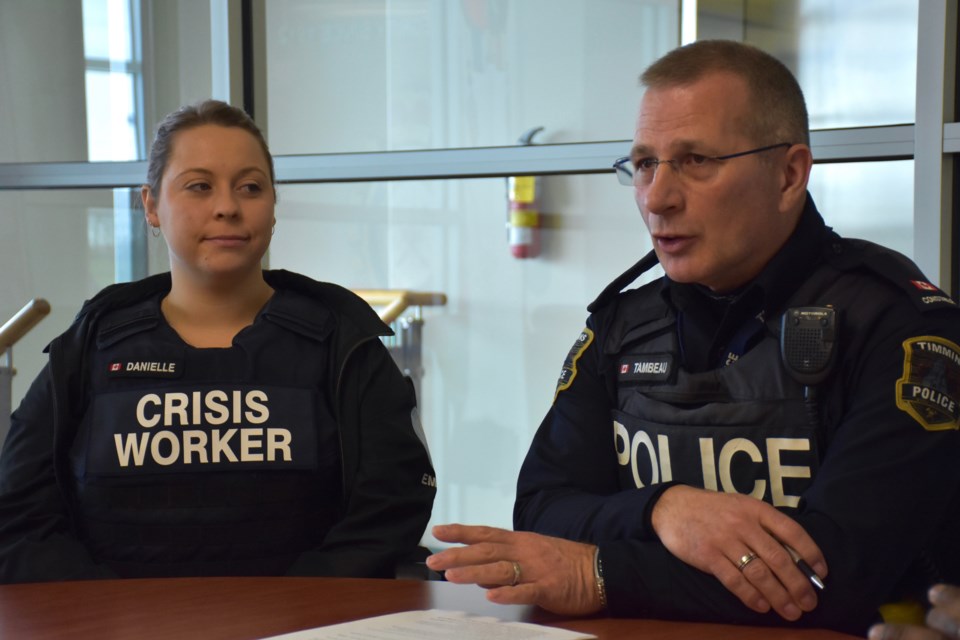After just over two months on the road, the Mobile Crisis Rapid Response Team already has great success stories, according to one of the frontline officers.
Timmins Police launched the initiative, which is a partnership between the police and Timmins and District Hospital, in September. For the program, two police officers are paired up with mental health staff to respond to calls.
Const. Mike Tambeau is one of the officers on the new team and shared highlights of what he's seen so far with the Timmins Police Services Board today.
He said there are four main features: diverting people from the emergency room for assessments, following up with people, reducing wait times at the hospital, and relieving the officers quickly.
“Having a mobile crisis team, we’re actually first responders to the crisis in the community. So having a crisis worker from TDH, an assessment is done in the community in a person’s home or wherever we may find them,” he said.
Typically, he said once a client situation is de-escalated, they're given the appropriate resources in the community, and encouraged to develop better coping skills.
“The beauty of the mobile crisis team is that we’re getting the person in the moment of crisis and that’s when they are usually asking for help,” said Tambeau.
Fourty per cent of their calls are apprehensions, of that 67 per cent were admitted to the mental health unit.
“It’s a high number when you say 67 per cent are admitted to the mental health unit, but in a sense that’s what you want mobile crisis to do," he said.
"Whoever we bring to the hospital is because we were not able to leave them in the community because we didn’t feel that they were going to be safe and sure enough the attending physician concurred with the assessment done by the crisis worker in the community and suggested a form to the mental health unit."
For clients left in the community, he said there is a follow-up, usually within 24 hours.
The time officers are spending at the hospital has been significantly reduced, he said.
With the old process, he said officers could be at the hospital for one to eight hours waiting for someone to be assessed and have security assigned to that person. Now it's 20 minutes to two hours.
“Now because the crisis worker is with us, the same crisis worker that would come from the MHU unit and meet us in the emergency department, we actually have that person with us now. That assessment begins immediately,” he said, adding doctors are also receiving more information by having the crisis worker on scene.
The team also means the first officers responding to a call are back on the road quickly.
Tambeau explained the crisis team is back up at the calls. A patrol officer responds first, and the crisis worker stays in the vehicle until everything is safe.
“If everything is safe, that primary unit is gone to take the next call in the community,” he said.
If an apprehension is required, the officer responding first stays with the team to bring the client to the hospital. Once the person is de-escalated and there are no safety concerns, he said the officer can leave.
“That’s been an issue for us in the past before we had mobile crisis is that we can easily have four officers at TDH when there’s five on the road, which means there’s one patrol officer patrolling 45,000 people,” he said.
Mobile Crisis Rapid Response Team is available daily from 11 a.m. to 11 p.m.
When the unit isn't on the road, Timmins Police Chief John Gauthier said clients are asking for the team members by name.
“They don’t want to speak to anyone else except for the four people involved, so that speaks to the level of professionalism and I think they’re making those connections with those people who need it the most,” said Gauthier.
